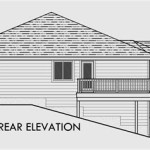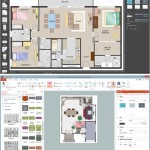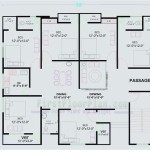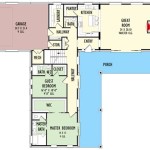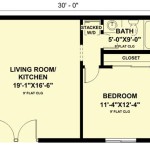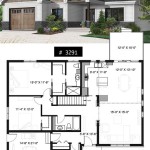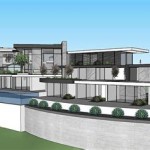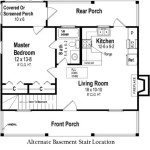House Plans for a View: Maximizing Scenic Potential
Designing a house to capitalize on a stunning view requires careful consideration of several architectural and site-specific factors. It's not merely about placing windows; it's about orchestrating a visual dialogue between the interior spaces and the exterior landscape. Successful house plans for a view integrate elements of design, orientation, materials, and landscaping to create a harmonious and immersive experience. This article explores key considerations and strategies for designing house plans that maximize the potential of a scenic vista.
Strategic Site Orientation and Placement
The first and perhaps most crucial step in designing a house for a view is understanding the site itself. This involves a comprehensive analysis of the topography, the direction of the view, and the path of the sun. The orientation of the house on the lot directly impacts the amount of natural light, passive solar gain, and the framing of the view from different rooms. A south-facing view, for example, might be ideal for maximizing sunlight in the winter, while a north-facing view might offer more consistent, glare-free light, making it suitable for artists' studios or home offices.
Accurate topographical surveys are essential for determining the best location for the house. Building on a slightly elevated portion of the land can enhance the view, while strategically terracing the landscape can create different levels of outdoor living spaces that also benefit from the scenery. Consider the prevailing wind direction and potential for windbreaks, such as trees or strategically placed walls, to minimize discomfort and energy loss. Also, analyze potential obstructions. Are there existing trees that need trimming, or could future development obscure the view?
Furthermore, consider the privacy of the home. While maximizing the view is paramount, consider the proximity of neighbors and the need for seclusion. Thoughtful landscaping, strategically placed fences, or even the elevation of the house itself can provide a sense of privacy without sacrificing the scenic advantage. Balancing the desire for expansive views with the need for personal space is a critical aspect of site orientation.
Building codes and regulations often dictate setbacks and height restrictions, so these must be factored into the site planning process. Working with a local architect or land surveyor is highly recommended to ensure compliance and optimize the placement of the house for both legal and aesthetic considerations.
Architectural Design for View Optimization
Once the site orientation is determined, the architectural design must focus on framing and enhancing the view from within the house. This involves careful consideration of window placement, room layout, and material selection. The goal is to create a seamless transition between the interior and the exterior, making the view an integral part of the living experience.
Large windows and sliding glass doors are obvious choices for maximizing views, but their size and placement must be carefully considered to avoid excessive heat gain or loss. High-performance glazing with low-emissivity (low-E) coatings can help mitigate these issues, while overhangs and awnings can provide shade during the hottest parts of the day. Consider the orientation of the windows and their potential for glare; strategically placed windows can capture indirect light and reduce the need for artificial lighting.
Open-concept floor plans are often favored in houses designed for views, as they allow for a wider field of vision and create a more spacious and airy feel. The living room, dining room, and kitchen are typically located on the view side of the house, while bedrooms and bathrooms can be positioned on the opposite side. Consider the flow of movement through the house and how each room connects to the view. Strategically placed mirrors can also reflect the view and create a sense of depth and spaciousness.
The roof design can also play a significant role in framing the view. Flat roofs or slightly sloped roofs can minimize obstruction of the view from upper floors, while gabled roofs can add architectural interest and create vaulted ceilings that enhance the sense of space. Consider the use of skylights to bring in natural light and provide glimpses of the sky and surrounding landscape.
Material selection should complement the surrounding environment and minimize visual clutter. Natural materials like wood, stone, and glass can blend seamlessly with the landscape, while neutral colors can create a calm and inviting interior. Avoid using overly ornate or distracting architectural details that compete with the view. The focus should always be on drawing the eye outwards and celebrating the natural beauty of the surrounding landscape.
Integrating Indoor and Outdoor Living Spaces
Creating a strong connection between indoor and outdoor living spaces is essential for houses designed for a view. This involves designing patios, decks, and balconies that seamlessly extend from the interior, providing opportunities to enjoy the view from different perspectives.
Sliding glass doors are a popular choice for connecting indoor and outdoor spaces, as they allow for a wide opening and create a fluid transition between the two. Consider using pocket doors that disappear completely into the wall, creating an even more seamless connection. Covered patios and decks can provide shade and shelter from the elements, allowing you to enjoy the view even in inclement weather. Outdoor kitchens and fireplaces can further enhance the outdoor living experience, making it a natural extension of the interior.
The design of the outdoor spaces should complement the architectural style of the house and the surrounding landscape. Natural materials like stone, wood, and gravel can create a harmonious and inviting outdoor environment. Thoughtful landscaping can further enhance the view and provide privacy. Consider planting trees and shrubs that frame the view without obstructing it, and use native plants that are adapted to the local climate and require minimal maintenance.
Outdoor lighting can also play a significant role in creating a welcoming and functional outdoor living space. Strategically placed lights can illuminate pathways, highlight architectural features, and create a warm and inviting ambiance. Consider using low-voltage lighting to minimize energy consumption and reduce light pollution. Motion-activated lights can provide security and safety, while dimmer switches can allow you to adjust the lighting to suit your mood and needs.
The integration of indoor and outdoor living spaces should be seamless and intuitive, creating a cohesive and harmonious living environment. The goal is to blur the lines between the interior and the exterior, allowing you to fully appreciate the beauty of the view from every part of the house.
Beyond these major points, consider the accessibility of the view from various areas of the house. Can someone enjoy the vista from the kitchen while preparing meals? Is the view easily accessible from a comfortable seating area? Thoughtful placement of furniture and fixtures can ensure optimal enjoyment of the view. Furthermore, minimizing visual obstructions within the house is key. Avoid bulky furniture or excessive decorations that can block sightlines to the outside.
The use of color can also play a role in enhancing the view. In general, opting for neutral or muted color palettes indoors helps to avoid drawing attention away from the vibrant colors of the natural landscape. Conversely, incorporating subtle shades of the view's dominant colors (e.g., blues and greens for a seaside view) can create a sense of harmony and connection.
Ultimately, a successful house plan for a view is one that prioritizes the visual connection to the surrounding environment while also creating a comfortable, functional, and aesthetically pleasing living space. By carefully considering site orientation, architectural design, and the integration of indoor and outdoor spaces, it is possible to create a home that truly celebrates the beauty of its surroundings.

Featured House Plan Bhg 1465

0629 12 House Plan Plansource Inc

Lake View Home Plan 59196nd Architectural Designs House Plans

Rear View House Plans For A Unique Contemporary Home

Modern House Plans With A View To The Rear Blog Dreamhomesource Com

Valley View House Plan Farmhouse Country

House Plan 4 Bedrooms 3 Bathrooms 3942 Drummond Plans

Meadowview Farmhouse Plan Archival Designs

Panoramic View House Plans Google Search Home Design Floor Modern Contemporary

Floor Plans View House

